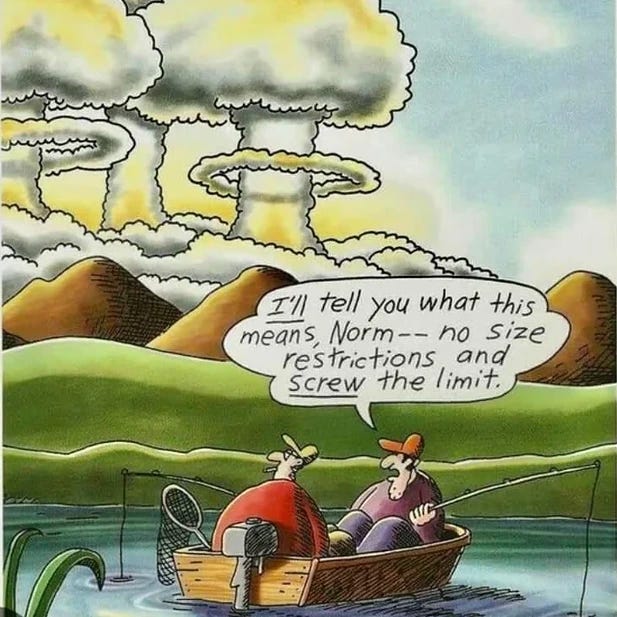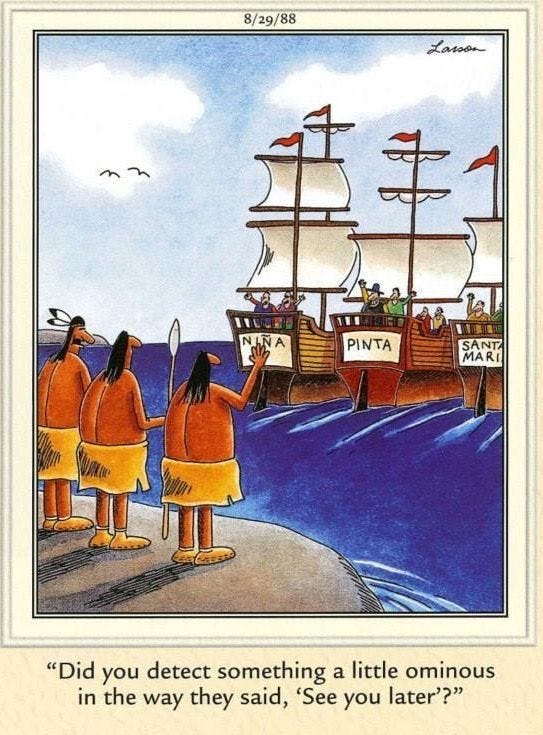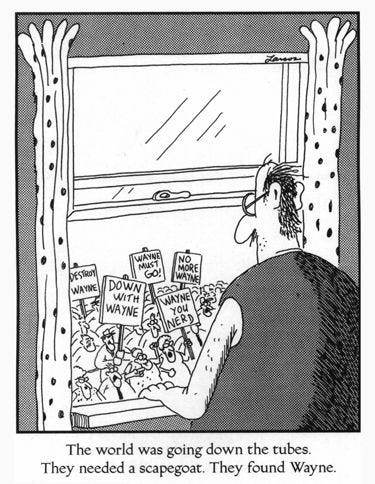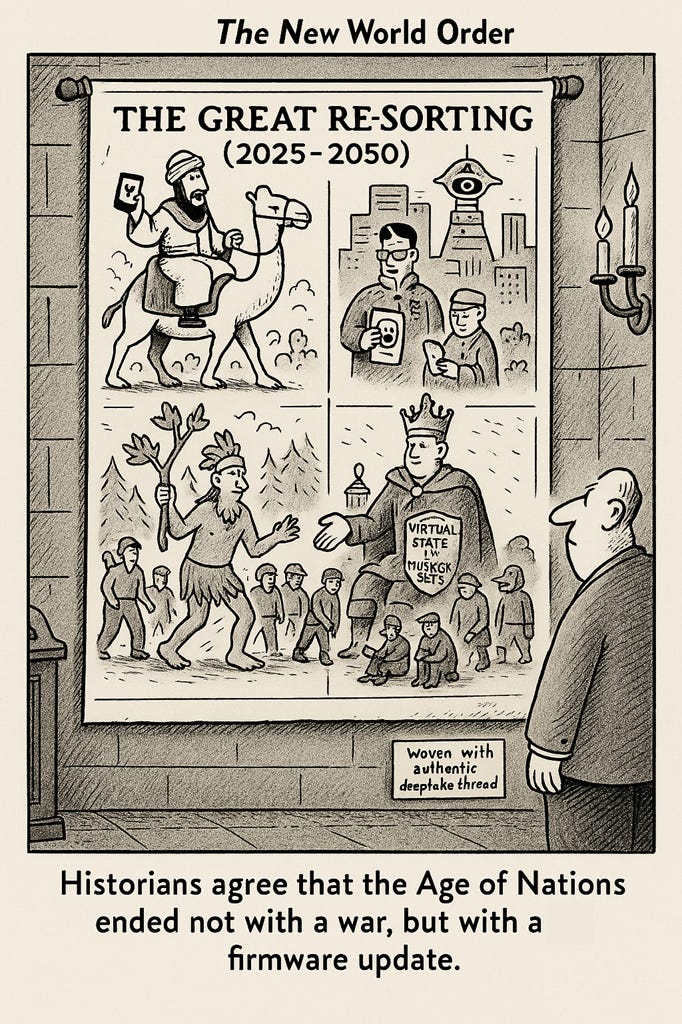Post-Collapse Paradigms are Quite the Career Opportunity
Power consolidates, then collapses. When aristocracies fall, priesthoods burn, and empires fragment, the marketplace of ideas opens to new entrants. It’s useful to understand how this tends to go, so we can predict how things might play out after an AI-fueled societal collapse of the liberal western order. You know, just in case.
Chaos is a Ladder
Post-collapse paradigms emerge in stages. Each previously marginalized class, in turn, gets to define itself as the heroic antidote to the old order:
🎓Middle classes reject the previous power’s cronyism. Their education, institutional memory, and cultural legitimacy are just what society needs: continuity, meritocracy, and lots of rules.
✊Lower classes1 reject the wealth of the old power centers, and the legalism that maintained it. They mythologize their suffering and seek social inversion.
🐎Outsiders reject the entire system, entering from the margins with purist ideologies of anarchic destruction.
Eventually, these paradigms are adopted or co-opted by new elites. The cycle reroutes and then someone writes a constitution. Or a manifesto. Or a holy book. Preferably all three.
70 CE, Jerusalem
When the Romans destroyed the Second Temple (a few decades after crucifying Jesus) they didn’t just level a building. They also destroyed the moral authority of the Sadducean priesthood who collaborated with them, and who led an order geographically and ritually tied to the Temple2.
✡️ Enter the scribes. Educated, and legally minded, the Pharises formed an ancient petite bourgeoisie. The early Rabbis rebuilt Judaism into a distributable and resilient practice of scrolls, study, and law. Jews became an insular and nomadic service caste, keeping the abstract systems of urban society running like cultural mitochondria.3
✝️ Amongst the poor, Jesus’s gospel slowly gained momentum. Initially a fringe moral protest led by artisans and fishermen, it offered a redemptive narrative for the oppressed that spread deeply and widely among the gentile underclass - before becoming absorbed and militarized by the Roman emperors themselves.
☪️And further out—geographically, theologically, civilizationally—emerged Islam. Born in the nomadic periphery, it rejected the entire urban system, wiping all trace of the temple period from memory. Muslim desert warriors submitted to the purity of Allah’s4 religious fire and eventually consumed the Byzantine system whole.5
Since ancient times, much of the world has been organized by religious conflict between Muslim and Christian spheres, with Jewish communities embedded throughout. Within a century of Constantinople’s fall, Columbus was dispatched to find another path around the Ottomans, with historically mixed results.
Creating Modernity
💰 In 1789, the French monarchy fell6, kicking the legs out of the divine right of kings. The first wave of revolution was led by the bourgeoisie: lawyers, merchants, pamphleteers. They produced the procedural scaffolding of republican liberalism—rights, constitutions, civic virtue, and free markets.
🥖 The mass energy came from below. The sans-culottes didn’t want abstract liberty; they wanted bread and blood. It would take Karl Marx and another century of elite squabbling before the Red Army established a proletariat socialist state in Russia.
🗺️ As European Republics turned towards their own people, nationalism spread through their former colonies. From Vietnam to Ghana to Algeria, new states wrote new histories along local, racialized, and anti-Imperial lines.
Since WWII, the world order has been liberalism in the west, socialism in the east, and anti-colonial nationalism everywhere else, with a lingering backdrop of Christian and Muslim conflict.7
Grand Collapse
That order is disintegrating. Socialism has collapsed under the weight of its fundamental inefficiencies. The founding myths of postcolonial nationalism are fraying under the reality of local-born cronyism and oppression. Liberalism - whose managerial class has only an abstract understanding of both power and poverty - seems to be collapsing in real time.
So what happens after liberalism, socialism, and anti-colonialism? Who is writing the new myths, now that each social class has had an opportunity to work out their hangups in grand acts of continent-spanning therapy?
Going Vertical
Modern technology shapes which paradigms scale, which fragment, and which disappear into silence. AI further accelerates creation, while memes and myths burst into life and dissolve in hours. Ideas frictionlessly cross class and country boundaries, while remaining stubbornly trapped within filter bubbles. Culture - local and digital - seems to matter more than country.
The classes themselves have changed. Rural peasantry has been replaced by chemical engineering and machinery, and the aristocracy is now an invisible web of board members and equity holders. Roboticized factories are pushing urban jobs into the service industries, taxing emotions more than bodies. Refugees and Jihadists are wired in with smartphones.
There is some certainty. Elites will be discredited. American supremacy will end with either a bang or a whimper. Whatever comes next will be both delivered by and made of AI, but shaped more by digital tribes and local identity than a bland and global internet.
So what does it look like when every digital tribe gets to push their ideas simultaneously? Will we see a cyber-caliphate across the Middle East, while China leans heavily into some kind of Confucian techno-authoritarianism?
One possibility is that US elections become fully deregulated, allowing a return of Tammany-Hall-style machine politics where votes are more overtly bought and sold. Real-time auctions and digital tribalism could make things look very different this time. Local ward bosses would be replaced by social media influencers with virtual statelets built around compelling hero stories, delivering their particular bundle of votes to the highest bidder at any particular moment. Billionaires and nation-states would find this to be a more efficient political spend than 30-second ads.
Rather than one narrative becoming dominant, this form of modified democracy could support ever-shifting coalitions that match the exigencies of the moment. Eventually hero figures will emerge that can speak to truly chimeric identities representing millions of voters - similar to our current parties, but with a cleaner release valve and a faster off-ramp to the next cult of personality.
You probably want to get in on the ground floor before they run out of cool hats.
Historically, the urban lower class’s movement dominates. The rural lower class just leans into folk religion and getting some land back from the gentry.
This priestly tradition went all the way back to Egyptian control of Canaan; the biblical Exodus may be a memory of the late bronze age collapse, when Egyptian symbology withdrew, leaving only the Canaanite God El and his court. The Midionite YHWH was soon introduced into Canaanite society, fusing with El to form Abrahamic monotheism. This was defined in opposition to Canaanite practices of idolatry and child sacrifice, and against Egypt itself.
Any ribosome can tell you that mitochondria control the nucleus and messenger RNA.
The semitic root 𐤀𐤋 (El) is the basis of the Arabic الله (Allah), the Ugaritic 𐎛𐎍 (El) who lead the Canaanite pantheon, and the Hebrew אֵל (El) / אֱלֹהִים (Elohim) who became the Israelite god upon merging with the Midionite יהוה (YHWH, but pronounced as Adonai [My lord] to avoid saying the name in vain) to form Abrahamic monotheism. Jesus himself, of course, spoke Aramaic and called God אֵלִי (Eloi) when asking why he had been foresaken on the cross. Simple.
They were eventually defeated, of course, by Obi Wan Kanobi and Dr. Zhivago.
For significantly more on the path from Lafayette to Lenin, listen to the entirety of Mike Duncan’s “Revolutions” podcast on double speed for several months.
Most Middle Eastern internal conflicts are struggles between the old outsider paradigm (Islam) and the new outsider paradigm (Nationalism).





